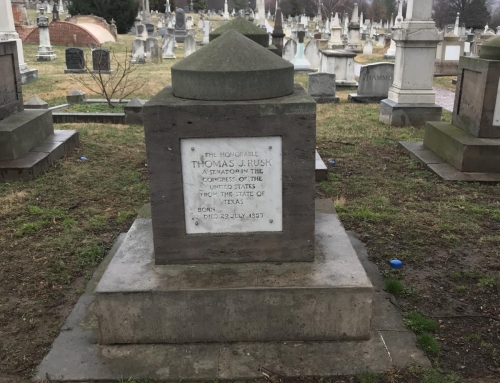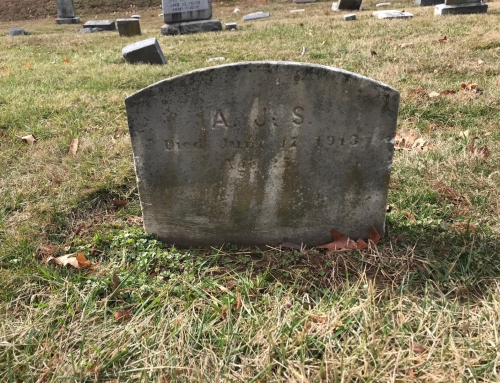Over the course of the next few weeks, Congressional Cemetery will be sharing information about green burials and the funeral industry’s role in the sustainability movement. The fourth section, Part Four, discusses vegetation and pest management.
Vegetation and Pest Management
Aerating the soil after digging a grave and the nutrients released through the decomposition of the body can promote plant growth above the grave after a fresh burial. The surface soil, or humus layer, in forested and grassy areas can be removed in [mostly] intact sections and later replaced. This can reduce any damage to both the surrounding root systems and microbial colonies, while also encouraging healthy plant growth post-burial. Planting trees and shrubs is the most effective way to mitigate the potential uptake of decomposition materials. Tree roots can incorporate any viruses, bacteria, and heavy metals from the soil and store them in the woody plant tissue without causing any harm to the tree or surrounding soil. Additionally, tree roots can draw water up from the soil, which can lower the water table.
Groundskeepers and lawn mowers are at risk of Chronic Obstructive Pulmonary Disease and several other respiratory and neurological diseases through exposure to toxic pesticides and herbicides. Rotational grazing by sheep or goats has proven to be a successful technique at controlling weed and invasive species growth. At Congressional Cemetery, we have used goats to help remove weeds and invasive species, and we have plans to continue this practice in the future. We also do not use pesticides or herbicides due to the health risks the harsh chemicals have on dogs and humans alike. Using a brush hog, mowing the lawn, or undergoing prescribed burns are also used at green cemeteries to help control invasive species and weed growth.

A goat maintaining the grounds at Congressional Cemetery.
Creating an Integrated Pest Management system can be used to prioritize threats and ensure balance amongst the vegetation in cemeteries since green cemeteries strive to emphasize and restore the natural biodiversity. The Green Burial Council requires that a certified natural burial ground has an implemented Integrated Pest Management system in place that must be designed, operated, and maintained to create a naturalistic appearance of the landscape based on the strategic use of plants and materials native to the region and by adhering to localized patterns of landscape. Non-native and invasive plants will likely require a long-term management plan. Invasive species are a global concern and can have detrimental effects on ecosystem processes because they can transport diseases, interfere with natural reproductive processes, and damage other plant and animal species’ habitats. It is essential for green cemeteries to develop a monitoring and creating a regional-specific mapping plan that is compatible with catchment areas, feeding and watering routes, vegetation communities, soils, transitional zones, and travel corridors. The most effective way for green cemeteries to control unwanted animal species, including deer, groundhogs, and squirrels, is through modifying their habitat by making the area unappealing to the specific species. Other management options include using non-damaging traps and relocation systems, utilizing natural repellents such as chili peppers, using glue traps that can be dissolved in vegetable oil, the use of sonic nets, and fencing.
Source:
Webster, Lee, ed. Changing Landscapes: Exploring the Growth of Ethical, Compassionate, and Environmentally Sustainable Green Funeral Service. Green Burial Council International.




